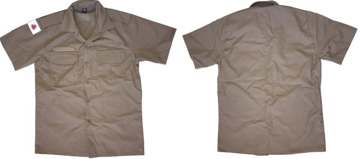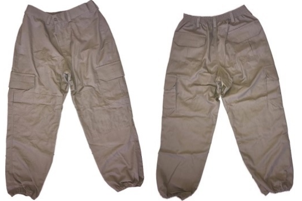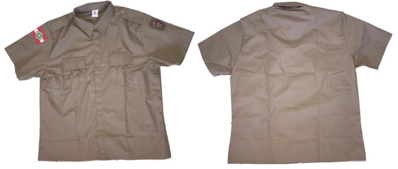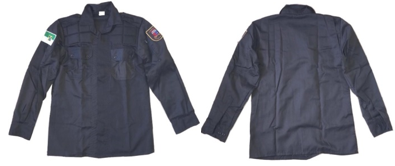Journal of
eISSN: 2574-8114


Research Article Volume 9 Issue 2
1Textile Engineering Post Graduate Program, Federal University of Rio Grande do Norte (UFRN), Natal, Brazil
2Textile Engineering Post Graduate Program, Federal University of Santa Catarina (UFSC), Blumenau, Brazil
3Production and Transportation Engineering Post Graduate Program (PPGEP), Federal University of Rio Grande do Sul (UFRGS), Porto Alegre, Brazil
4Chemical Engineering Post Graduate Program, Federal University of Rio Grande do Norte (UFRN), Natal, Brazil
Correspondence: Lucas Gomes Miranda Bispo, Production and Transportation Engineering Post Graduate Program (PPGEP), Federal University of Rio Grande do Sul (UFRGS), Federal University of Rio Grande do Sul, Porto Alegre, Engineering School, Production and Transportation Engineering Department, Avenue Osvaldo Aranha - até 590/591 Bom Fim 90035190 - Porto Alegre, RS - Brazil
Received: March 13, 2023 | Published: April 3, 2023
Citation: Bispo LGM, Ferreira ILS, Steffens F, et al. Comparative study of Brazilian Military Police Uniforms. J Textile Eng Fashion Technol. 2023;9(2):31-36. DOI: 10.15406/jteft.2023.09.00330
Although there are literature studies on military uniforms, few investigate those used by the Military Police (MP). As such, the present study aimed to characterize the structural, colorimetric and mechanical properties of Brazilian MP Uniforms. To that end, yarn count, fabric weight, yarn density, weave pattern, optical microscopy, fastness, reflectance spectrophotometry and tensile strength tests were performed on uniforms from MPMG, MPSC and MPRN (Military Police from the states of Minas Gerais, Santa Catarina and Rio Grande do Norte, respectively). Structural similarities between the MPMG and MPSC uniforms were detected, and significant differences in relation to the MPRN. The three uniforms displayed satisfactory performance in dry rubbing fastness, and unsatisfactory in wet rubbing fastness and loss of color after washing. Thus, there is significant room for improvement in military police uniforms in Brazil.
Keywords: Military textile, color fastness, characterization, technical textile
The uniform, distinctive clothing worn by classes of professionals, is an important attribute for workers and organizations, since it characterizes a category of individuals, identifying them as members of a certain group or institution.1 In addition, the individual who wears a certain uniform begins to comply with a set of rules of conduct, and it may therefore also have a disciplinary effect.2,3 Uniforms can be divided into different categories, such as: military, school, sports, ecclesiastical and service. The uniforms used by the Military Police (MP), who are considered outdoor workers, are classified as service uniforms.4
The Army was one of the first institutions to use standardized clothing, which would later be called a uniform. There are reports of standardized uniforms dating back thousands of years.4–6 As time went by, uniforms were modernized and regulated for use by workers.4,7
The military uniform, the official representation of a professional in the Armed Forces, is standardized according to each institution, expressing values, traditions, hierarchy and discipline. Due to their overt policing, long shifts and the need to work in public places, uniforms are essential for military police officers. In addition, they are exposed to daily hazards and various weather conditions during their activities.8 Administrative tasks are also performed in the same uniforms.
Military clothing is aimed at protecting the individual from the external environment (cold, heat, humidity, tears, projectiles); functionality to assist in the performance of tasks, with more efficiency and less energy consumption; and soldier identification. Comfort took on a secondary role in relation to these factors. In this sense, Slater (1996) highlights the paradox between comfort and protection, and also argues that individuals need to feel not only protected, but also comfortable.7
The daily use of military clothing causes unpleasant thermal and tactile sensations, thereby affecting comfort and performance.7 The perceived uncertainty regarding the effective protection provided by military clothing also negatively impacts the soldier's psychological comfort.9 Krueger points out that protection, functionality and identification factors, added to the comfort of the uniform, are important for soldiers in performing their tasks well.10
In addition to being an important component for carrying out their duties, the military police uniform has ethical and social value, promoting a close link between police and their role in society.11,12 Thus, it is justified as a topic to be studied, since it addresses different aspects of a complex profession with high social representation; however, due to the lack of information on how uniforms meet the needs of their users, there are few studies on this topic.
It is important to note that in Brazil, each of the 26 states is responsible for acquiring its military clothing, and there is no national standard for uniforms. Thus, it is important to know the main characteristics of uniforms currently used by police officers in different states, and determine whether there are significant differences in structural, colorimetric and morphological characteristics in military uniforms used in regions with different climates (temperature, humidity, among others) and cultures. In this context, the main duty of military police officers is ostensive policing, which is performed while wearing uniforms in public areas, often requiring long hours on duty (through a shift system), characterized by uncertainty and exposure to various weather conditions such as intense sun, rain, wind and/or cold.8 It is important to note that administrative tasks are also performed while wearing the same uniform.
Therefore, the purposes of the military police uniform are maximized, as it is not only a component for the execution of their job, but it also has ethical and social value, promoting a close connection between the police officer and their role in society, and is one of their means of personal protective equipment. As such, it presents itself as a topic to be studied, as it addresses distinct aspects of a complex and highly socially significant profession. However, there are few studies focused on this topic, resulting in a lack of data and information on how current uniforms meet the real needs of military police officers, and whether they truly fulfill the purposes of protecting and, simultaneously, providing a better sense of comfort.
Given the above, the aim of the present study was to characterize the structural, colorimetric and mechanical aspects of uniforms used by military police officers from different Brazilian states, namely Minas Gerais (MPMG), Santa Catarina (MPSC) and Rio Grande do Norte (MPRN), and investigate if they are adequate for the duties they perform.
Materials
The textile substrates used for this study are the shirts and trousers of the military police uniforms from three Brazilian states: Minas Gerais, Santa Catarina and Rio Grande do Norte (Table 1). A comparison of military uniforms among different regions of Brazil, namely the southeast (MPMG), south (MPSC) and northeast (MPRN), was the criterion used to choose the states for this research.
|
|
Shirt |
Pants |
|
MPMG |

|

|
|
Composition: 67% polyester + 33% cotton |
||
|
MPSC |

|

|
|
Composition: 70% polyester + 30% cotton |
||
|
MPRN |

|

|
|
Composition: 75% polyester + 25% viscose |
||
Table 1 Uniforms used by MPMG, MPSC and MPRN
The composition, modeling and color of the uniforms from MPMG and MPSC are similar, especially the shirt. However, there are noticeable differences in these aspects in the MPRN uniform.
Morphological/structural characterization tests
To characterize the fabrics of the uniforms, yarn count, fabric weight, yarn density (in the warp and weft direction, for both shirt and pants) and weave pattern analysis were performed. The standards and methods used are described in Table 2.
Rehearsal |
Standards |
Yarn count (linear density) |
ABNT NBR 13214:1994 |
Fabric weight |
ABNT NBR 10591:2008 |
Yarn density |
ABNT NBR 10588:2015 |
Weave pattern |
ABNT NBR 12996:1993 |
Table 2 Morphological/structural characterization test and standards
Optical microscopy
Optical microscopy images were obtained via a digital microscope with 1000x magnification capacity, using Yawcam 0.7.0 software. The analyzed materials measured 10cmx10cm.
Washing fastness test
The washing fastness test was carried out in a Mathis machine, model WT, following ISO 105–C06:2010 and ABNT NBR 10597/1988 technical standards, which establish tests related to commercial and domestic washing. Under these conditions, a dimensional analysis was performed to observe shrinkage during the washing process.
Rubbing fastness
The Mesdan crockmeter was used for the wet and dry friction fastness test, based on the ISO 105–X12:2001 standard.
Reflectance spectrophotometer
A Datacolor 500 reflectance spectrophotometer was used for the colorimetric evaluation of the uniforms under study. The equipment has a spectral range between 390 nm and 700 nm. Analysis was performed with a D65 illuminant and 10º observer, where the color space was analyzed according to the Commission Internationale de l’Eclairage (CIE) system. To that end, the uniform was considered standard before the washing fastness test, and analyzed after the washing cycle. Thus, it was possible to calculate the difference in colorimetric measurements by CIELAB polar coordinates (L*C*h).
Tensile strength
A Mesdan Tensolab 3000 dynamometer was used to conduct the tensile strength tests, following ASTM D 5034, the standard test for tensile strength and elongation of textile fabrics. Mechanical evaluation was carried out in the weft and warp direction, at a temperature of 21ºC and relative humidity of 65%. Five tests were performed on each uniform.
Structural/morphological analysis: yarn count, fabric weight, yarn density and weave pattern
Uniform yarn count, fabric weight and yarn density analysis are shown in Table 3. Regardless of uniform part, yarn count indicates that the yarn in the warp direction of the MPRN uniform is the thickest, followed by the MPSC and MPMG. In the weft direction, the thickest yarns are from the MPMG uniform, followed by MPSC and MPRN.
Property |
Piece of uniform |
MPMG |
MPSC |
MPRN |
Yarn count (linear density) (tex) |
Shirt |
|||
Warp |
32,50 ± 0,58 |
36,50 ± 0,87 |
44,00 ± 0,29 |
|
Weft |
50,00 ± 0,76 |
38,00 ± 0,58 |
19,50 ± 0,50 |
|
Pants |
||||
Warp |
32,50 ± 0,76 |
34,50 ± 0,29 |
44,50 ± 1,00 |
|
Weft |
50,00 ± 1,80 |
37,50 ± 0,76 |
19,00 ± 0,50 |
|
Fabric weight (g/m2) |
Shirt |
235,60 ± 2,93 |
214,60 ± 2,08 |
171,40 ± 0,71 |
Pants |
239,70 ± 3,00 |
207,90 ± 4,42 |
175,30 ± 1,48 |
|
Density |
Shirt |
|||
(yarn/cm) |
Warp |
42 |
40 |
25 |
Weft |
20 |
20 |
27 |
|
Pants |
||||
Warp |
42 |
40 |
25 |
|
|
Weft |
20 |
20 |
27 |
Table 3 Structural properties of uniforms (yarn count, fabric weight, density)
With respect to fabric weight, the MPMG and MPRN uniforms are the heaviest and lightest, respectively. In regard to yarn density, the MPMG and MPSC uniforms had equal values in the weft direction and similar values in the warp direction. On the other hand, MPRN exhibited lower yarn density in the warp and higher in the weft direction.
The results show that the MPRN uniform fabric is approximately 27 and 18% lighter when compared to the MPMG and MPSC, respectively. This first analysis indicates that MPRN officers may experience less physical fatigue in their daily activities due to the lighter uniform. It is also important to mention that the climate in Rio Grande do Norte state is predominantly subhumid and semiarid, displaying less variation throughout the year compared to the other two.13 The long sleeve shirts worn by the MPRN, aimed at protecting the skin against ultraviolet rays, may also be related to the higher temperatures.
In regard to the weave fabric pattern, the results obtained were similar for the MPMG and MPSC uniforms (Figures 1(a) and 1(b), respectively), with both being plain weave based.
A comparison of the two garments showed that the MPSC uniform has more weft threads (14) than its MPMG counterpart (12). However, this difference does not increase the fabric weight of the MPSC uniform. The MPMG uniform is the heaviest, which is a result of the higher yarn count in the weft direction, as shown in Table 3.
The MPRN uniform, on the other hand, has a serge twill ligament pattern, known as an interrupted twill (Figure 2). This type of structure is characterized by the formation of “diagonal lines” seen in the fabric and contributes to the weight, since there is 1 weft thread (thinner) for every 2 warp threads.
Optical microscopy
The images obtained from the optical microscope are shown in Figure 3 (MPMG), Figure 4 (MPSC) and Figure 5 (MPRN), where it is possible to visualize intertwined threads that form the fabric. As observed in the weave pattern, the MPMG and MPSC uniforms exhibit similarities in their weave structures. However, there are three warp threads overlying the weft threads in the MPMG uniform, and in the MPSC uniform three weft threads over their warp counterparts.
The weave structure of the MPRN uniform is shown in Figure 5. The warp and weft threads form diagonal ribs on the technical face, which characterizes the twill weave, as mentioned above.
Colorimetric analysis: fastness tests
Table 4 exhibits the results of the color fastness to wash, observed through the classification levels on the gray scale. No changes were found for the color change criterion, with excellent results (grade 4/5) on the gray scale. With respect to color transfer to the control fabric, the MPRN uniform displayed less fastness, obtaining grade 4 on the staining scale, which can still be considered a good result. The other two uniforms showed almost no color transfer, exhibiting similar results (grade 4/5).
Sample |
Color change |
Color staining |
MPMG |
4/5 |
4/5 |
MPSC |
4/5 |
4/5 |
MPRN |
4/5 |
4 |
Table 4 Color fastness to wash
In relation to the conditions under which the uniforms are used, due to work demands and MP routines, they are subjected to multiple washing cycles. As such, the fastness level may decrease over time. Thus, a maximum level of color fastness to wash (grade 5 on the gray scale) is desirable to maximize a uniform's service life.
Dimensional analysis of the samples carried out after the color fastness to wash revealed no shrinkage. Since polyester makes up most of the uniform’s woven fabrics, this result was expected due to its high dimensional stability.14,15
The results obtained in the rubbing fastness tests are shown in Table 5. In the dry friction test, the three uniforms exhibited grade 4/5, with a greater degree of color change and transfer in the wet friction test. As per the gray scale, the color change in all the samples was grade 4, grade 4 for MPMG and 3/4 for MPRN and MPSC in the color transfer. The only exception was found in the color transfer of the MPRN uniform, which displayed a slightly higher staining, classified as grade 4.
Sample |
Dry |
Wet |
||
|
Color change |
Color staining |
Color change |
Color staining |
MPMG |
4/5 |
4/5 |
4 |
4 |
MPSC |
4/5 |
4/5 |
4 |
3/4 |
MPRN |
4/5 |
4 |
4 |
3/4 |
Table 5 Rubbing fastness
A greater degree of color change and staining was found in the wet friction test. As per the gray scale, all samples exhibited a level 4 color change, a level 4 color staining in the MPMG sample and level 3/4 in the MPRN and MPSC.
These results indicate that wet fabrics favor color loss. This needs to be taken into account due to the long working hours and outdoor activities performed by the police, where they are exposed to rain. Polyester has good rubbing fastness, both in the dry and wet state,16 but when blended with other fibers this characteristic may be affected.
Reflectance spectrophotometry
The difference in color between uniforms was evaluated, considering the standard uniform (before the washing process) and after the washing cycle. The parameters evaluated were: (i) Lightness (L*): positive and negative values indicate samples that are lighter and darker than the standard, respectively; (ii) Color intensity (C*): positive values indicate higher-than-standard saturation in the sample analyzed, with negative values therefore denoting less vivid coloring; (iii) Hue angle (h*): indicates a sample hue between the Cartesian axes (red, yellow, green and blue) within the chromatic circle. The total color difference (DE) was also measured (Table 6).
Sample |
DL* |
DC* |
Dh* |
DE |
MPMG |
0,72 |
-1,89 |
-0,74 |
2,15 |
MPSC |
1,24 |
-0,57 |
-0,43 |
1,43 |
MPRN |
1,88 |
0,34 |
-0,22 |
1,93 |
Table 6 CIE L*C*h colorimetric coordinates of uniforms
The DE result demonstrated that the three uniforms showed a difference in color, but the ideal is to obtain values closer to 0 (zero), which indicates minimal variation. Positive DL* values reveal that all samples were lighter than the standards. With respect to color intensity (DC*), the MPRN uniform exhibited the most noticeable saturation, followed by MPSC and MPMG. On the other hand, negative Dh* values indicate that the color angle (hue) is smaller than that of the standard.
These findings show a color change in the uniforms after the washing cycle. However, in general, this variation was not very high, indicating good fastness values, as already discussed in the washing fastness test results. The largest L*C*h* variations were observed for the MPRN uniform, mainly for lightness. Given that this uniform is darker, the loss of color makes the fabric more visible. These values corroborate the change and color transfer results obtained in the wash fastness test.
Mechanical analysis: tensile strength test
The maximum breaking force results for the three uniforms are shown in Figure 6. The warp direction exhibited higher tensile strength in the three samples, being more significant in the MPRN uniform, followed by the MPSC and MPMG. According to the literature, warp threads generally provide greater tensile strength. In addition, the direct yarn count of the warp threads was higher in the MPRN uniform than the others, which may have influenced the strength obtained.
In the weft direction, the MPMG uniform exhibited slightly higher strength than the others. It is noteworthy that the tex values of the MPMG uniform were higher than those of the other two, which may explain the small strength increase. Thus, the structural parameters of the uniforms, such as the yarn counts of the fabric, can be linked to their mechanical strength performance.
The elongation values of the uniforms are shown in Figure 7. In the weft direction, the MPRN uniform obtained the highest elongation (40%), followed by MPSC (26%) and MPMG (22%). In the warp direction, the elongation of the MPMG and MPRN uniforms was practically the same.
The MPMG uniform withstood a lower load when stretched in the longitudinal direction (warp), among the three uniforms, but obtained greater stretching capacity at its breaking point. The MPRN uniform had greater tensile strength in the warp direction. In the weft direction, it exhibited lower tensile strength than the MPMG uniform, but showed high elongation capacity (nearly double that of the other samples). The lowest tensile strength and elongation in the warp direction were found in the MPSC uniform, which also performed worse than the MPMG and MPRN uniforms in the longitudinal direction.
The difference in results may have been caused by the structural properties of the uniforms. In addition to the yarn count, the fabric pattern varies, and therefore so will the mechanical properties.
The modulus of elasticity values was calculated for the three uniforms and are shown in Table 7. High values were obtained for all three uniforms in the warp direction, with greater rigidity for the MPRN and MPSC, albeit less rigid in the weft direction than the MPMG uniform.17
Sample direction |
Young's modulus (MPa) |
||
|
MPMG |
MPSC |
MPRN |
Warp |
0,52 |
0,73 |
0,87 |
Weft |
0,50 |
0,34 |
0,26 |
Table 7 Modulus of elasticity of uniforms
The present study aimed to analyze the structural, mechanical and colorimetric characteristics of uniforms currently used by the military police in the Brazilian states of Minas Gerais, Santa Catarina and Rio Grande do Norte. The structural/morphological properties showed similarities in the fiber composition, modeling, color and structural characteristics of MPMG and MPSC uniforms. The MPRN uniform has distinct characteristics, especially regarding color and modeling. Given that Minas Gerais and Santa Catarina have similar climates, the use of similar uniforms is expected. On the other hand, the climate of Rio Grande do Norte is quite different from that of the other two states, thereby requiring different uniforms. With respect to the colorimetric properties, the fabrics exhibited excellent levels of washing fastness and good results in the rubbing fastness tests (dry and wet). Despite obtaining positive results, the fastness aspect still needs to improve, given the number of activities performed outdoors. Reflectance spectrophotometry analysis revealed a visible difference between the samples due to the color difference (DE), indicating that the uniforms became lighter, a result that complemented the data obtained in the fastness tests.
Different mechanical behavior was observed, with the MPRN uniform exhibiting greater strength in the warp and elongation in the weft direction, while the MPMG uniform displayed greater strength in the weft and elongation in the warp direction. As such, it was found that the structural properties of fabrics directly influence their mechanical behavior and, consequently, their performance during use.
Thus, the significance of the present study is in suggesting possible changes in order to achieve the closest-to-ideal uniform for public security professionals. It is important to highlight the need for specific technical standards in order to develop suitable clothing for this purpose. To that end, investment in laboratory research, field studies and market analysis are necessary.
It was also concluded that there is significant research potential for textile engineering in the military area, with the ability to develop textile innovations (uniforms, accessories, among others) and continuously improve the materials used.
The first author thanks full the Brazilian government funding agency CAPES (Coordination for the Improvement of Higher Education Personnel) for the scholarship received [process number = 88882.461729/2019-01].
None.
Authors declare that there is no conflict of interest exists.

©2023 Bispo, et al. This is an open access article distributed under the terms of the, which permits unrestricted use, distribution, and build upon your work non-commercially.